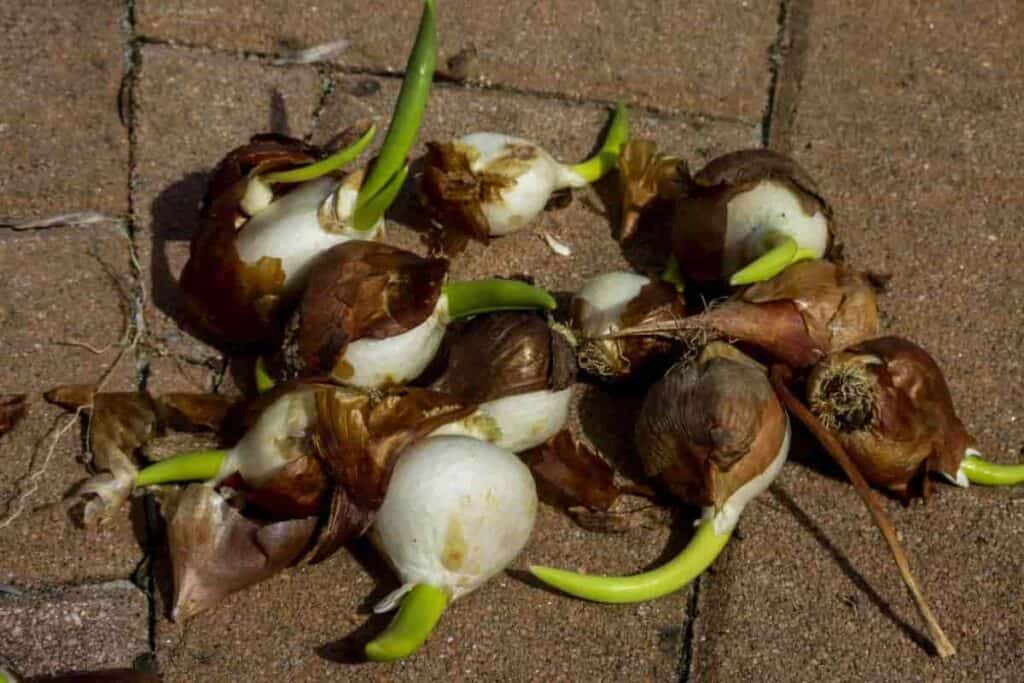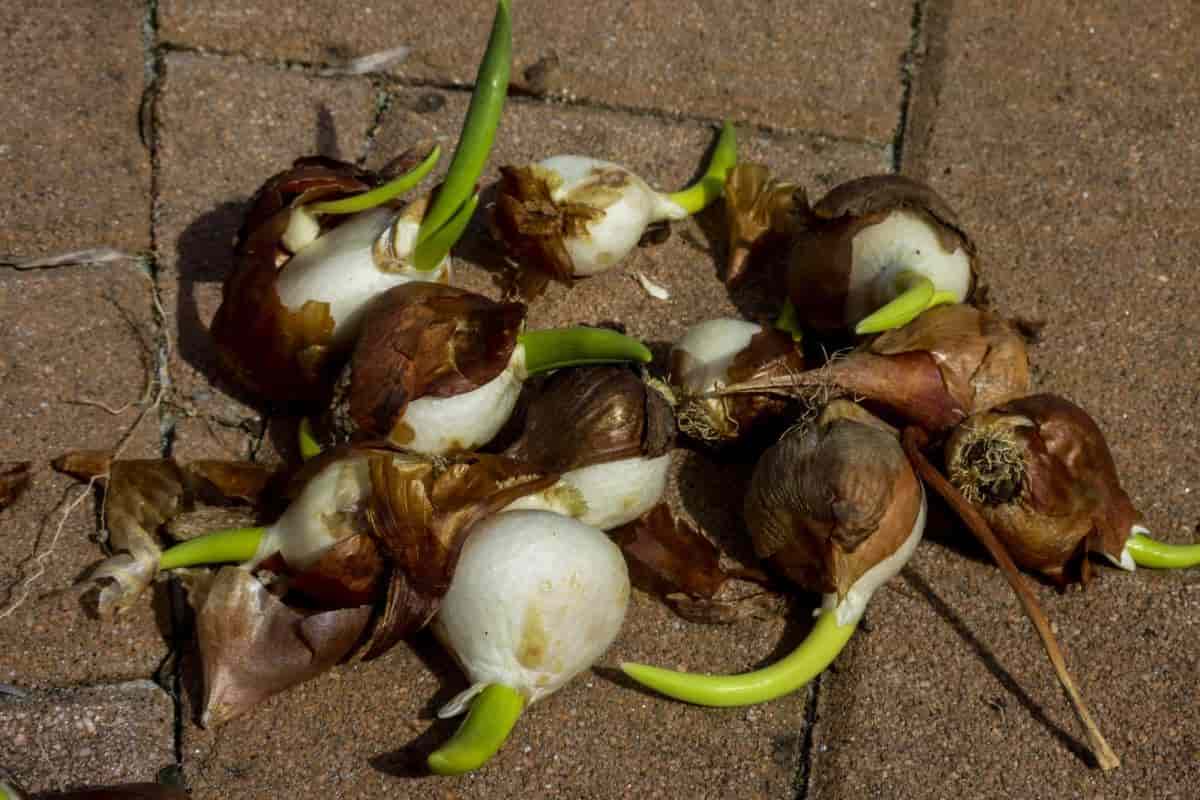Now, and every year at this time, a wonderful gardening ritual is taking place. Gardeners, by the hundreds of thousands, are planting millions of tulip bulbs shaped like dark brown raindrops.
Each gardener dreams about the color of what spring will bring out of these bulbs. Most gardeners know, too, that their dreams are justified, for the tulip, like most bulbs, has a built-in assurance of success.

Now, in October, this symbol of spring is encased within the bulbs—leaves, stems, and flowers, all formed and waiting for spring’s warm rains and sunshine. All the tulip bulb asks is a period of low temperatures for six weeks or more.
In some parts of the South, refrigeration for two or three months may be substituted for nature’s snow and ice.
There, bulbs are planted in December. In extremely hot areas of the South, it is not practical to grow tulips.
Select Firm Bulb Tulips
When buying tulips, select firm bulbs free from bruises or cuts. Some of the tulip species have very small bulbs, such as T. dasystemon, so it is impossible to give one overall size recommendation that would apply to all varieties.
Small numbers of bulbs can easily be planted with a trowel or specially designed bulb-planting tool.
Where large quantities are involved, it is easier and quicker to dig out the entire bed to the proper depth or, when bulbs are planted in scattered groups, to dig out areas that will be large enough for 6 to 12 bulbs.
Planting Tulips in Bold Groups
Tulips look best when planted in bold groups using contrasting or contrasting colors. Avoid planting them in straight lines or simply alternating two colors or varieties, as this becomes monotonous.
A protected spot near the house or against a wall will usually bring you blossoms a week earlier than in a more exposed location. Plant groups near or under a small flowering tree or shrub that blooms simultaneously with the tulips.
Flowering dogwoods, lilacs, and tulips must have been made for each other because they all bloom at the same time and always look well when planted together.
Combining Perennials With Tulips
Perennials can also be combined with tulips for pleasing effects. Try bleeding hearts with pink, cream, or white tulips.
The early blue phlox (Phlox divaricata) or Virginia bluebells (Mertensia virginica), used as an underplanting for the tall Darwin tulips, can transform a garden into a dream world of spring beauty. Perennial candytuft (Iberis sempervirens) is possibly one of the best companions for tulips.
The snowy whiteness of the flowers helps accentuate the brilliant colors of tulips, and neat green candytuft foliage makes a useful low edging for the tulip beds. Even when not in flower, the candytuft foliage is attractive and stays green all winter.
If seeds of pansies or forget-me-nots were started in summer, the plants could be set among the tulips now, where they will complement each other with flowers in spring. If the seed has not started, plants can be bought and planted in very early spring.
In a Rock Garden
Nothing helps to pep it up for spring and tulips, especially the low-growing species. In recent years a great many hybrids of these species have been made available so that there is a wide variety to choose from.
The creative gardener is always looking for some improvement or some way to get new effects from the old and familiar.
On the right are listed a few of the possibilities for using tulips. Use some of them in next year’s spring garden. You will not be disappointed.
44659 by George Howard Pride
